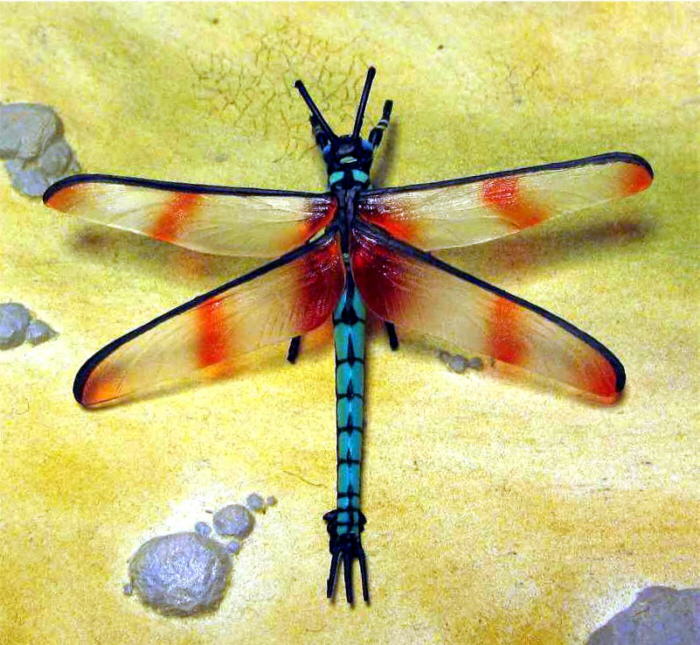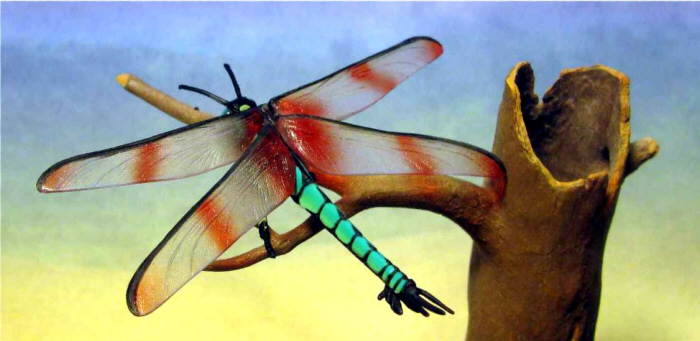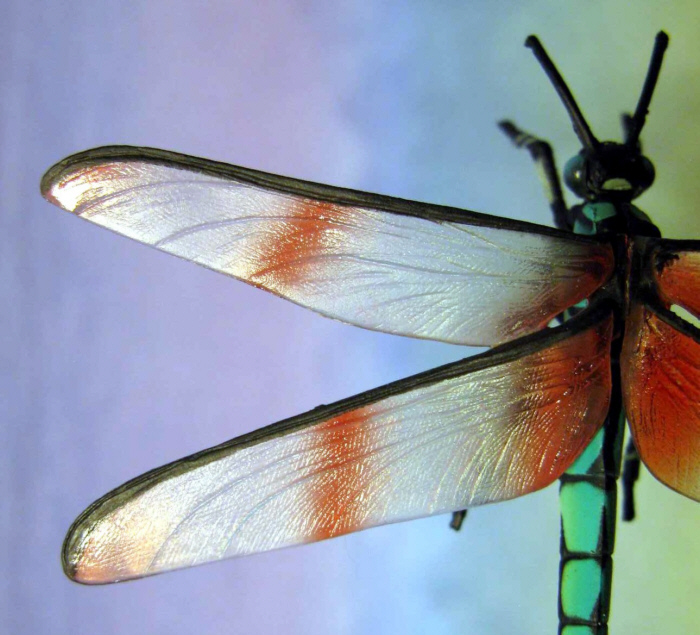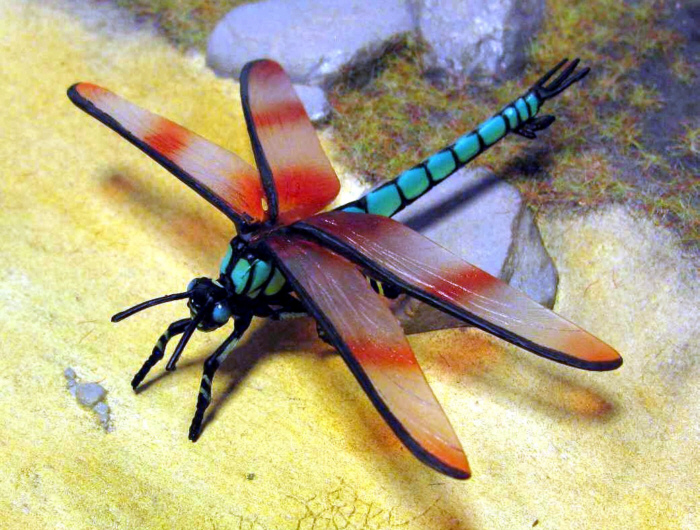Review and Photos by Dr Andre Mursch (“Brontodocus”). Edited by Plesiosauria.
Meganeura monyi was a gigantic insect belonging to the extinct Protodonata and superficially resembling a dragonfly. Its remains come from the Stephanian (late Carboniferous) of France and England and are approximately 300 million years old. With a wing span of 0.66 m or more it was one of the largest insects ever found (the closely related Meganeuropsis permiana was apparently even slightly larger). Several important key characters of true Odonata are not present in Protodonata (e.g. pterostigma, nodus, reduced pronotum, left and right wing insert closely to each other), hence they are usually regarded as a separate, more primitive group and also their trivial name has been suggested to be “griffinflies” rather than dragonflies to avoid confusion. However, Meganeura probably shared its predatory habits with modern dragonflies.

The Dinotales Series 4 by Kaiyodo released this rendition of Meganeura in 2003 (at least that is the date stamped on the bases of the other figures from the series). It has a wing span of 85 mm and a body length of 58 mm (66 mm if the three appendages at the tip of the abdomen are included). The scale is approximately 1:8.

The figure shows three terminal appendages (epiproct and a pair of paraprocts) similar to those of most modern dragonflies, but larger. Near the end of the abdomen the ventral side shows three shorter appendages, these are located at the end of segment 8 and therefore represent the three pair of valvulae (which belong to segments 8 and 9) around the genital opening. The shape of the wings and the complex wing venation correspond with a reconstruction by Handlirsch (1925) that is often seen in biology and paleontology textbooks. Both pairs of wings have a black anterior margin and three transversal, crimson bands. The wing venation is sculpted as a relief and is incredibly well detailed. The posterior wings of both sides insert very close to each other, rather similar to modern dragonflies than the more widely spaced wings of Protodonata.

The thorax is deep as in a true dragonfly, the dorsal plate of the first thoracal segment (the pronotum) is invisible – this is a character of true dragonflies and the segment was not that reduced in Protodonata (note: the first visible thoracal segment of the figure bears wings and is therefore the second). The first pair of legs has four tarsal segments which is probably one too many. The segments of the body are turquoise-coloured with black margins, a colour scheme that is very reminiscent of many extant dragonflies, especially darners (Aeshnidae). The allover colouration is very good and convincing, yet maybe not as spectacular as in some of the other Dinotales figures.
The compound eyes are semiglobular and correct in size, significantly smaller than in extant dragonflies. A rather inconspicuous detail is a pair of ocelli located near the inner margin of each compound eye, however, there should be three of them instead of two. The antennae are much longer than the hardly visible, bristle-like antennae their modern counterparts have.

The Dinotales Meganeura is – despite its few inaccuracies – a very good figure of a spectacular prehistoric insect which would normally not be represented by dinosaur toy lines at all. It can be recommended to all collectors who do not exclusively focus on dinosaurs. However, it is quite rare as most figures of the Series 4 so it might be quite expensive when it shows up. It can be found occasionally on eBay here
Disclaimer: links to Ebay and Amazon on the DinoToyBlog are affiliate links, so we make a small commission if you use them. Thanks for supporting us!




You guys are sissies.They are on ClawMarksToys.Com search it its 30$.
That’s an awesome model. I didn’t know it was separate from true dragonflies either. I should mention here that when you put Meganeura through a time-vortex black hole, it comes out the other end as Megaguiras, who only Godzilla can destroy.
Well, I can imagine you may like the term “Griffinfly” 😉
@ Blaine: I think I’ve seen your website and it’s great. I’d really love to see a review written by you.
Well I learned a lot reading this one. And to think all that time I always just regarded it as a scaled up dragonfly!
This is an awesome piece but I have found it to be quite fragile. I am a collector of arthropod toys/replicas and this is the only extinct insect I have found to date (some trilobites, lopopods, and eurypterids, but this is the only extince insect).
I’d be interested in maybe reviewing arthropods for your site, if you are so interested.
I would so dearly love to have this.